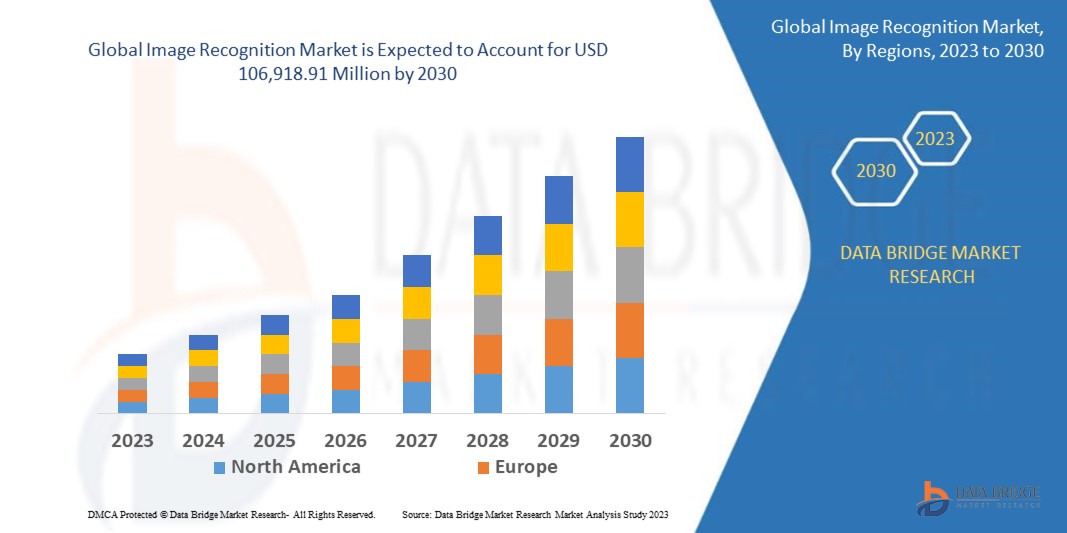Introduction:
In the ever-evolving landscape of technology, image recognition has emerged as a transformative force, reshaping industries and redefining user experiences. From security surveillance to retail and healthcare, the applications of image recognition are diverse and far-reaching. In this blog, we will delve into the dynamic world of the image recognition market, exploring its current trends, challenges, and the promising future that lies ahead.
The Rise of Image Recognition Technology:
Image recognition technology, powered by artificial intelligence (AI) and machine learning (ML), has witnessed unprecedented growth in recent years. Its ability to analyze and interpret visual data has found applications in various sectors, including healthcare, automotive, retail, and more. The market is being driven by advancements in deep learning algorithms, increased computing power, and the availability of large datasets for training models.
Applications Across Industries:
The versatility of image recognition technology is evident in its applications across diverse industries. In healthcare, it aids in diagnostics through medical imaging analysis, while in retail, it enhances customer experiences through facial recognition for personalized recommendations. The automotive sector benefits from image recognition in the development of autonomous vehicles, contributing to improved safety and navigation.
Challenges in Accuracy and Bias:
- Despite its remarkable progress, the image recognition market faces challenges, particularly in terms of accuracy and potential biases. Algorithms are susceptible to errors, especially when dealing with complex or ambiguous visual data. Additionally, concerns have been raised about biases in image recognition systems, leading to the development of more ethical and unbiased AI models.
- Addressing these challenges requires ongoing research, transparency in algorithm development, and a commitment to diversity in training datasets. Striking the right balance between innovation and ethical considerations is crucial for the sustained growth of the image recognition market.
Privacy and Ethical Considerations:
The widespread adoption of image recognition technology has raised concerns about privacy and ethical implications. Facial recognition systems, in particular, have sparked debates regarding individual privacy rights. Striking a balance between technological advancements and safeguarding privacy requires the establishment of clear regulations and ethical frameworks.
Governments and industry players must collaborate to develop and enforce guidelines that protect user privacy while allowing for the responsible and ethical deployment of image recognition technologies.
Market Trends and Innovations:
- The image recognition market is characterized by continuous innovation and evolving trends. Edge computing, which enables data processing on the device itself rather than relying solely on cloud servers, is gaining traction for real-time image analysis. Augmented reality (AR) and virtual reality (VR) applications also leverage image recognition, enhancing user experiences in gaming, education, and beyond.
- Keeping pace with these trends requires industry players to invest in research and development, fostering a culture of innovation and adaptability. Collaboration between technology companies, startups, and research institutions is essential to drive the next wave of advancements in image recognition.
Future Outlook:
- The future of the image recognition market appears promising, with ongoing research and development poised to address current challenges and unlock new possibilities. As technology continues to advance, image recognition is expected to play a pivotal role in shaping the way we interact with the digital and physical worlds.
- The integration of image recognition with other emerging technologies, such as 5G connectivity and the Internet of Things (IoT), holds the potential for groundbreaking applications. Enhanced accuracy, reduced biases, and improved privacy safeguards will be critical factors in determining the trajectory of the image recognition market in the coming years.
Expansion rate in image recognition market
- Data Bridge Market Research’s analysis reveals a compelling trajectory for the global image recognition market. In 2022, the market stood at a valuation of USD 34,709.79 million, and it is projected to experience substantial growth, reaching a staggering USD 106,918.91 million by the year 2030. This forecast suggests a remarkable compound annual growth rate (CAGR) of 13.1% during the forecast period from 2023 to 2030. The driving force behind this growth is attributed to the pivotal role played by the automobile and transportation sector.
- The escalating integration of image recognition technology for autonomous vehicle development is a key factor, enhancing safety measures through advanced driver assistance systems (ADAS). Furthermore, the optimization of traffic management with real-time visual data analysis contributes to heightened efficiency and safety standards in the industry. Data Bridge Market Research not only provides valuable insights into market scenarios, such as growth rate, segmentation, geographical coverage, and major players but also offers an extensive analysis.
- This includes in-depth expert analysis, geographically represented company-wise production and capacity information, network layouts of distributors and partners, and a detailed and updated price trend analysis. Additionally, the market reports meticulously cover deficit analysis within the supply chain and demand, ensuring a comprehensive understanding of the market dynamics.

